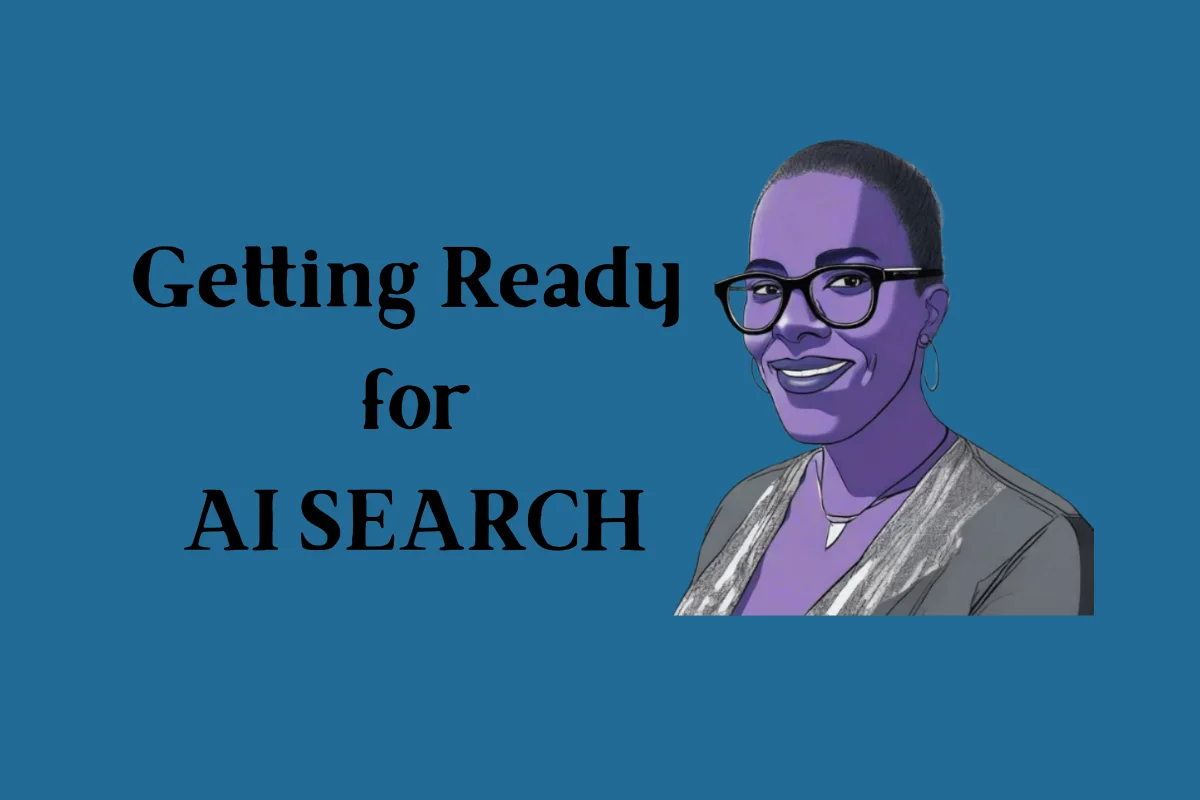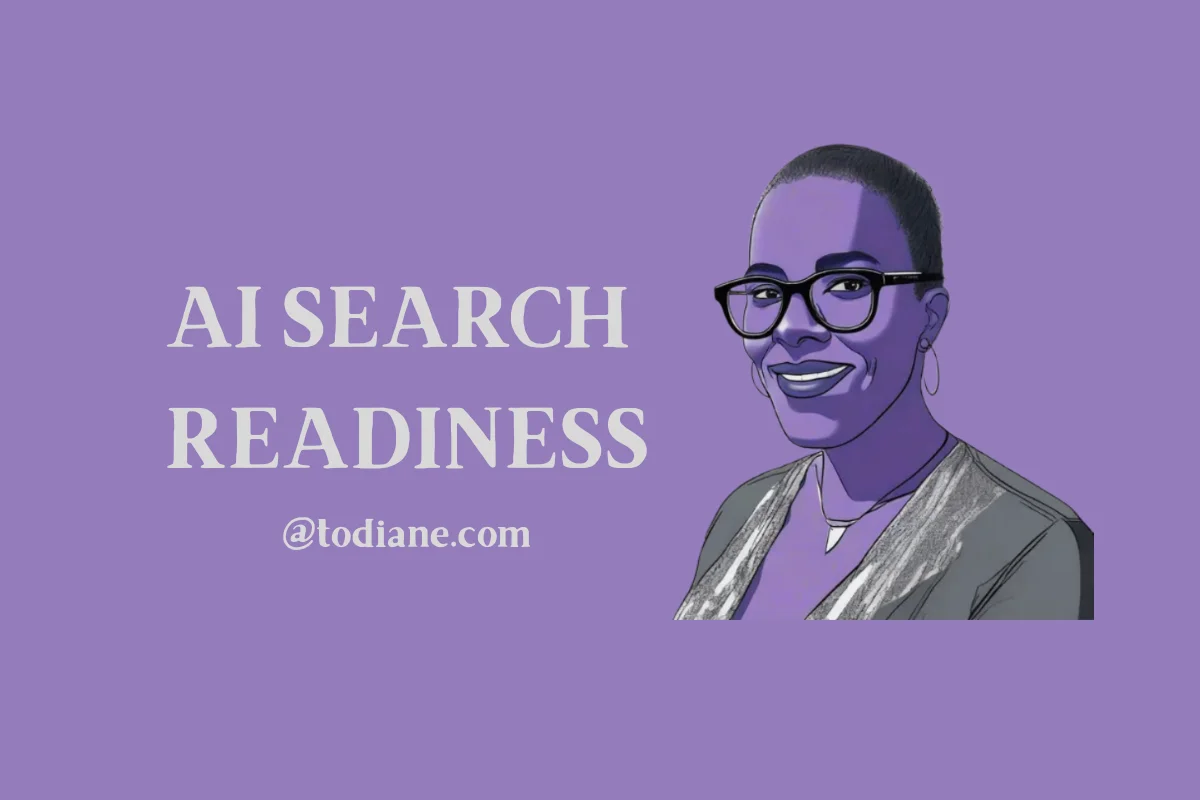Quick Summary
AI search readiness didn’t appear overnight. It is the result of a long evolution in how search engines interpret and deliver information. Over the past decade, we have moved from keyword matching to semantic understanding, from link-based ranking to AI-powered reasoning.
This post traces that journey from the early days of search engines through to today’s AI-driven overviews and explains what it means for developers, creators, and businesses trying to stay visible in a generative search world.
The Beginning Was Search That Couldn’t Understand
When Google first launched in 1998, its revolutionary idea was PageRank - a way of ranking pages by how many other pages linked to them. It didn’t understand what a page meant; it just knew how many people pointed to it.
For years, SEO revolved around keywords and backlinks. Writers stuffed terms into paragraphs; developers built link networks. Search was mechanical and literal.
But as users began asking more conversational questions — “How do I…” or “What’s the best way to…” — that approach started breaking down. Search needed to evolve from matching words to understanding intent.
The First Shift: Semantic Search and Knowledge Graphs (2012–2018)
The first big move toward understanding came with semantic search. In 2012, Google introduced the Knowledge Graph, a massive database of entities and relationships like people, places, things that allowed search to connect concepts, not just text.
Around the same time, structured data via Schema.org gained importance. Developers could now tell search engines, in machine-readable language, “This page is a blog post,” or “This is a recipe,” or “This person is the author.”
This was the birth of structured understanding, the foundation of what we now call AI search readiness. It was no longer enough for search to crawl pages. It needed to interpret relationships between ideas.
The Second Shift: NLP and Context (2018–2020)
In 2018, Google released BERT - the first large-scale transformer model used in search.
It could understand context, not just keywords.
For example, before BERT:
“Can you get medicine for someone pharmacy”
might return results about buying medicine, not picking it up for another person.
After BERT, search began to interpret intent: the question behind the words.
This shift from words to meaning changed everything. Search became conversational, and for the first time, AI models were helping people get answers directly on the results page.
The Third Shift: Generative AI (2020–2023)
Between 2020 and 2023, tools like GPT-3, ChatGPT, and Claude made generative AI mainstream.
For decades, search engines had summarised existing content; now, AI could generate new content based on what it read.
This moment created the bridge between search and reasoning.
People began asking AI models questions instead of typing them into Google. Developers started realising that the next challenge wasn’t getting indexed — it was getting interpreted.
By late 2022, everyone in SEO and web development could feel the shift. The term “AI Search Readiness” wasn’t common yet, but the groundwork was set.
The Fourth Shift: Search Becomes Generative (2023–2024)
The real turning point came in May 2023, when Google announced the Search Generative Experience (SGE) - a version of search powered by its own generative AI model.
SGE didn’t just list results. It created summaries of complete answers drawn from multiple sources.
For the first time, traditional SEO lost its monopoly on visibility. Even if your page ranked first, users might see an AI-generated summary instead of your link. Click through rates crashed for many sites and publishers began to realise that AI wasn’t just using their data it was interpreting it.
And the clearer your structure, schema, and content were, the better your chances of being accurately represented.
That’s when AI Search Readiness became an actual strategy - a way of preparing sites so AI systems could read, summarise, and trust your content.
The Fifth Shift: AI Overviews and the Global Rollout (2024–2025)
In May 2024, Google officially launched AI Overviews in the United States - the public version of SGE. By mid-2025, it had rolled out to multiple countries and languages.
AI Overviews changed how people consume information. Instead of browsing multiple sites, users read a single AI-generated paragraph summarising the best of them. Links still appeared, but secondary and most of the time people never bothered to click through.
At the same time:
- Bing Copilot became the default for Microsoft search.
- Perplexity AI gained traction as a research-focused, citation-based search engine.
- ChatGPT’s Browse mode allowed conversational queries powered by live web results.
Search was no longer just retrieval; it was reasoning and in the very distant future it will become shopping.
Where We Are Now (Late 2025)
As of late 2025, AI search is no longer experimental. Nearly every major engine uses generative models to create summaries, highlight answers, and infer meaning. The structure of your site now matters more than its rank position.
Key realities:
Schema is the new sitemap. If AI can’t parse your schema, it can’t use your content.
- Content clusters signal expertise. AI systems recognise interlinked topics as authority.
- FAQs and summaries feed directly into AI snippets.
- Clarity of writing determines whether your ideas are represented accurately.
- For developers, this means building for understanding, not just indexing.
Django’s structured design - models, relationships, templates - naturally supports this, giving developers a built-in advantage in the AI search era.
The Future: From Search to Discovery
Where is all of this heading? Probably toward something even more interactive.
AI search is becoming AI discovery - systems that anticipate intent before you ask. Instead of “searching,” you will converse with an intelligent agent that already understands your preferences, context, and history.
For creators and developers, this means one thing: clarity and structure will always win.
Whether AI reads your site today or a conversational agent references it tomorrow, the principle is the same, make your meaning machine-readable.
Why This Matters for Developers
If you work with Django, you already build in the way AI search prefers.
- Your models define entities.
- Your foreign keys define relationships.
- Your templates define structure and hierarchy.
Add schema and thoughtful writing, and your project becomes an ecosystem of meaning and not just a collection of pages.
AI search readiness isn’t about rewriting the web. It’s about describing it better.
And developers who can do that will define the next generation of search visibility.
Key Takeaways
AI search readiness emerged from years of search evolution — from keywords to knowledge graphs to generative summaries.
Structured data and schema are now fundamental to visibility.
Writing clarity and content clusters are as important as backlinks once were.
Django’s data-driven structure gives developers a head start.
The future of search is conversational — clarity is your advantage.
FAQs
When did AI search readiness become important?
It began gaining traction in 2023 after Google introduced its Search Generative Experience (SGE), which used generative AI to summarise content. Once users started reading AI answers instead of visiting pages, the need for machine-understandable content became clear.
What’s the difference between SEO and AI search readiness?
SEO focuses on ranking content. AI search readiness focuses on representing content accurately within AI summaries. It’s about making meaning accessible to algorithms that read and reason, not just index.
How does structured data help with AI search?
Structured data (JSON-LD, Schema.org) provides context — telling AI what your content is about, who wrote it, and why it matters. This helps AI generate more accurate summaries and link back to your site as a trusted source.
Will AI search replace traditional search completely?
Probably not soon. But the balance is shifting — AI summaries now dominate the top of search results. Preparing your content for AI interpretation ensures you remain visible as search evolves.
Thanks for sharing:

